Transform your balcony into a birdwatcher’s paradise with our comprehensive guide! In “How to Attract Birds to a Balcony,” we’ll unveil a treasure trove of tips and tricks to lure feathered friends to your urban oasis. Get ready to create a haven for avian visitors and embark on a delightful journey of birdwatching bliss right from your own home.
Table of Contents
- 0.1 The Joy of Birds
- 0.2 The Benefits of Attracting Birds
- 0.3 How To Attract Birds To A Balcony
- 0.4 The Importance of a Bird-Friendly Environment
- 1 Understanding Bird Behavior and Preferences
- 2 Providing Food Sources
- 3 Water Features
- 4 Shelter and Nesting Opportunities
- 5 Conclusion
- 6 FAQs: How To Attract Birds To A Balcony
- 6.1 Can I attract birds to my balcony even if I live in an urban area?
- 6.2 What types of food should I offer to attract birds to my balcony?
- 6.3 How do I choose the right bird feeders for my balcony?
- 6.4 Do I need to provide water sources for birds on my balcony?
- 6.5 How can I create a bird-friendly environment on my balcony?
- 6.6 Are there any specific plants or flowers that birds prefer?
- 6.7 Do I need to consider bird behavior and preferences when attracting birds to my balcony?
- 6.8 How long does it take for birds to start visiting my balcony?
- 6.9 What should I do if pests become a problem on my bird-friendly balcony?
- 6.10 Is it legal to attract and feed birds on my balcony?
- 7 Author
The Joy of Birds
There is something magical about observing birds in their natural habitat, even if that habitat is limited to your balcony. Their graceful flights, enchanting songs, and intricate behaviors can captivate anyone’s attention.
By attracting birds to your balcony, you invite these fascinating creatures into your life, providing endless entertainment and delight. Moreover, welcoming birds into your outdoor space can offer therapeutic benefits.
Studies have shown that watching birds can reduce stress levels, lower blood pressure, and improve overall mental well-being.
As you sit back on your balcony with a cup of coffee or tea in hand, surrounded by the sights and sounds of nature’s orchestra, you’re transported into a peaceful state where worries seem to melt away.
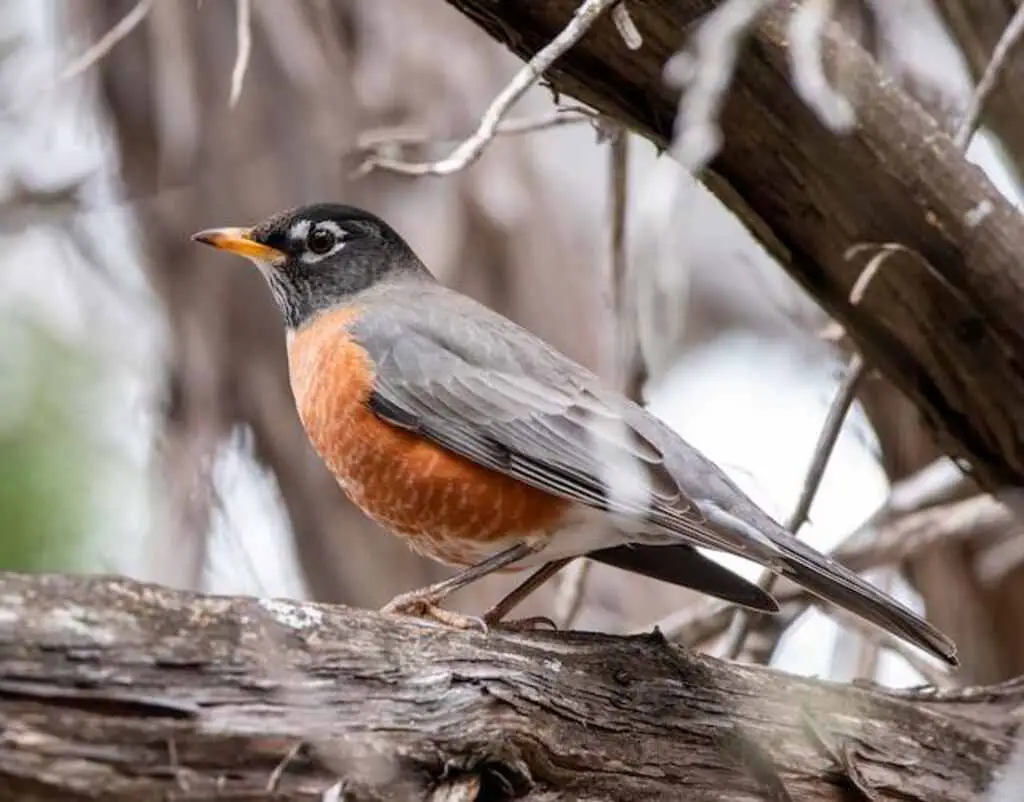
The Benefits of Attracting Birds
Creating a bird-friendly environment extends beyond mere enjoyment; it also plays an essential role in conserving bird populations and promoting ecological balance.
By providing food sources and nesting opportunities on our balconies or urban spaces where natural habitats are limited or disrupted by human activities, we contribute positively to bird conservation efforts.
Birds play an integral part in pollination by carrying pollen from flower to flower as they forage for nectar or insects.
This process aids in plant reproduction and ensures the continuity of diverse plant species that support other wildlife.
By attracting birds to your balcony, you inadvertently assist in maintaining healthy ecosystems and biodiversity.
How To Attract Birds To A Balcony
To attract birds to a balcony, provide suitable food sources like seeds and suet, plant native flowers, install a birdbath or small fountain for water, and offer shelter through birdhouses or nest boxes.
Create a bird-friendly environment with food, water, and nesting opportunities to entice these feathered visitors to your balcony.
The Importance of a Bird-Friendly Environment
A bird-friendly environment is crucial for the well-being and survival of our avian friends. It involves providing suitable food sources, water, shelter, and nesting opportunities.
By creating an environment that meets their basic needs, we make our balconies enticing and safe havens for birds. Urban areas often lack natural food sources that birds rely on for sustenance.
Therefore, by offering bird feeders with appropriate seeds or nectar specific to various species, we help compensate for this deficiency.
Water features such as birdbaths or fountains provide vital hydration and bathing opportunities.
Furthermore, incorporating shelter options like birdhouses or nest boxes replicates natural nesting sites that may be scarce in urban landscapes.
These nest boxes mimic tree cavities or safe crevices where birds can raise their young away from predators or adverse weather conditions.
Attracting birds to your balcony not only brings joy into your life, but also contributes to the conservation of these remarkable creatures.
By creating a bird-friendly environment filled with appropriate food sources, water features, shelter options, and nesting opportunities, you play an active role in protecting avian populations while experiencing the wonders of nature right outside your window.
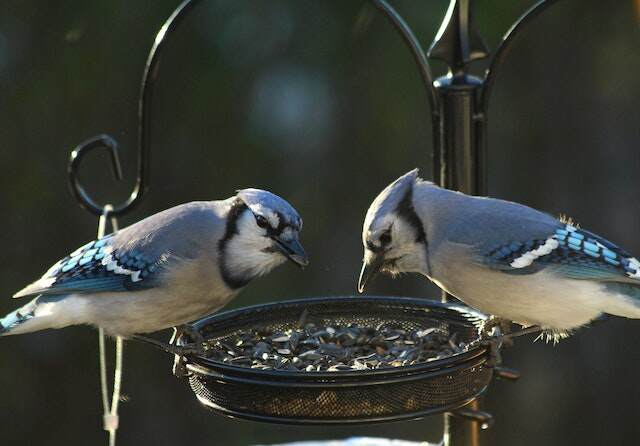
Understanding Bird Behavior and Preferences
Different bird species and their preferences
When it comes to attracting birds to your balcony, understanding the diverse preferences of different species is key. Some birds are primarily seed eaters, while others are nectar feeders or insectivores.
For example, finches and sparrows are commonly attracted to seeds such as sunflower or nyjer seeds, while hummingbirds are attracted to nectar-producing flowers or specialized feeders.
Understanding these distinctions will help you tailor your efforts towards specific bird species.
Researching local bird species in your area
To attract birds effectively, it is essential to research which species frequent your particular region.
Local bird guides, online resources, or even consulting with local ornithological societies can provide valuable insights into the specific types of birds that you can expect to encounter in your area.
By identifying the most common visitors, you can focus on creating an environment that caters specifically to their needs.
Feeding habits of birds
To successfully attract birds to your balcony, it is crucial to understand their feeding habits. Some species prefer ground-feeding, while others prefer elevated feeders or hanging platforms.
Researching the feeding habits of different bird species will help you select appropriate feeders and food sources that align with their preferences.
Additionally, considering a variety of food options such as seeds, suet cakes for insectivorous birds like woodpeckers or bluebirds, and even live or dried mealworms will help diversify the types of avian visitors you attract.
Nesting preferences
Creating a welcoming space for nesting is another important aspect of attracting birds to your balcony.
Different bird species have varying nesting preferences – some may prefer cavities in trees or specially designed nest boxes placed on walls or nearby trees.
Researching nesting requirements for specific bird species will guide you in providing suitable nesting opportunities on your balcony.
Consider the size, design, and placement of nest boxes to meet the requirements of different birds.
Migration patterns
Understanding the migration patterns of birds in your region can greatly enhance your bird-watching experience.
Many birds undertake long-distance journeys during specific seasons, while others are year-round residents.
By familiarizing yourself with the timing of migration, you can prepare your balcony to cater to migratory species during their passage.
Providing ample food sources and water before their arrival and during their stay will not only attract more birds, but may also offer them a much-needed resting spot on their arduous journey.
Understanding bird behavior and preferences is essential when attempting to attract avian visitors to your balcony.
By recognizing the specific preferences of different bird species, researching common local species, learning about feeding habits and nesting preferences, as well as being aware of migration patterns in your area, you can create an environment that is irresistible to a variety of feathered friends.
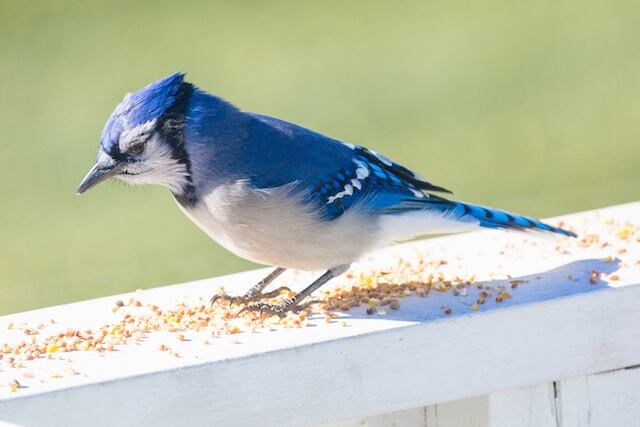
Providing Food Sources
Fueling the Bird Feast: Installing Bird Feeders
To attract a diverse range of bird species to your balcony, installing bird feeders is an essential step. Different species have distinct dietary preferences, so it is important to choose feeders that cater to their needs.
Tube feeders with small perches are ideal for finches and sparrows, while larger platform feeders can accommodate ground-feeding birds like doves and jays.
Fill these feeders with appropriate seeds such as sunflower, safflower, or millet seed mixes. Hang the feeders at varying heights to attract birds with different feeding habits.
Suet Delights: Offering High-Energy Treats
Insectivorous birds require a protein-rich diet, and offering suet or mealworms is a great way to entice them to your balcony. Suet blocks or specialized suet feeders can be easily obtained from bird supply stores.
Ensure that the suet is made of high-quality ingredients without additives harmful to birds. Mealworms can be placed in small bowls or shallow dishes on your balcony’s railing or near feeding stations.
| Bird Species | Preferred Foods | Feeder Type | Installation Recommendations |
|---|---|---|---|
| House Sparrow | Seeds (sunflower, millet) | Hopper or platform | Place feeders at varying heights |
| American Goldfinch | Seeds (thistle, sunflower) | Tube or mesh | Hang feeders with small perches |
| Northern Cardinal | Seeds (sunflower, safflower) | Hopper or platform | Provide feeders with large perches |
| Black-capped Chickadee | Seeds (sunflower, nyjer) | Tube or mesh | Place feeders near shrubs or trees |
| Mourning Dove | Seeds (millet, corn) | Ground or platform | Scatter food on the ground or use tray feeders |
| Ruby-throated Hummingbird | Nectar | Hummingbird feeder | Hang feeders near flowers or plants |
| Blue Jay | Seeds (sunflower, peanuts) | Hopper or platform | Provide larger, sturdy feeders |
| European Starling | Insects, suet, fruits | Suet feeder | Use suet feeders with metal cages |
| Downy Woodpecker | Insects, suet, seeds | Suet or platform | Place suet feeders on tree trunks or poles |
| House Finch | Seeds (thistle, sunflower) | Tube or mesh | Offer feeders with small perches |
Please note that these are general preferences, and bird behavior can vary by region. It’s recommended to research local bird species to understand their specific preferences and adjust accordingly.
Nature’s Bounty: Planting Native Flowers
Planting native flowers not only adds beauty but also provides natural food sources for birds visiting your balcony. Choose flowers that produce seeds favored by local bird species like coneflowers, sunflowers, or black-eyed susans.
These plants will not only attract seed-eating birds, but also encourage insect activity due to their nectar-rich blooms.
Insects serve as an additional food source for many bird species and will enhance the biodiversity on your balcony.
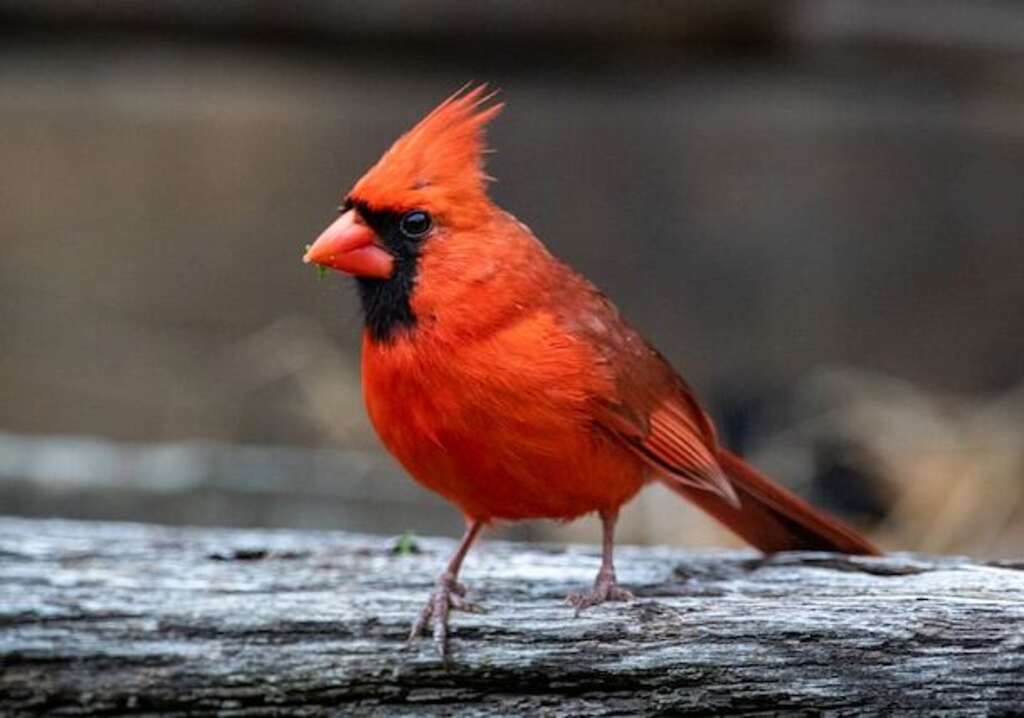
Water Features
Aqua Oasis: Installing a Birdbath
Providing water sources is crucial for attracting birds to your balcony. Installing a birdbath with shallow water is ideal as it allows birds to drink and bathe safely.
Place the birdbath in a visible and easily accessible spot, preferably near trees or plants where birds can perch before taking a dip.
Ensure that the water is clean and change it regularly to avoid mosquito breeding.
Melodious Murmurs: Adding a Small Fountain or Dripper
The sound of running water is irresistible to many bird species, so adding a small fountain or dripper can captivate their attention.
The movement and gentle splashing sounds mimic natural water sources, increasing the appeal of your balcony as a bird-friendly environment.
Choose fountains or drippers specifically designed for outdoor use, ensuring they are safe for both birds and electrical connections.
Shelter and Nesting Opportunities
Avian Abodes: Placing Birdhouses or Nest Boxes
Offering shelter and nesting opportunities will encourage birds to view your balcony as an inviting habitat. Install birdhouses or nest boxes suitable for different species on your balcony walls or nearby trees.
Research the specific requirements of local bird species, such as hole size, height from the ground, and facing direction when placing nest boxes.
By providing these cozy sanctuaries, you contribute to conserving avian populations while enjoying their presence.
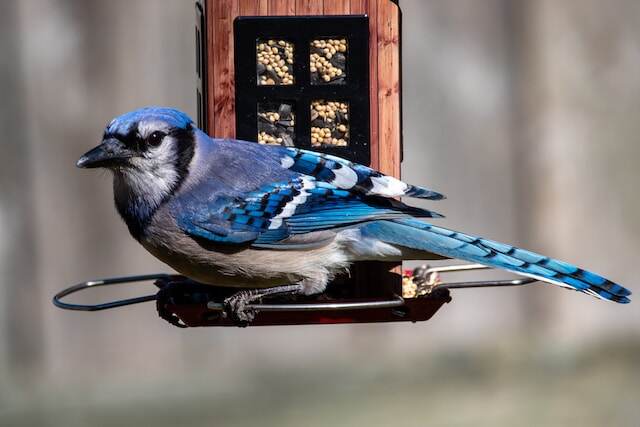
Conclusion
In creating a bird-friendly space on your balcony, you have embarked on a journey that not only brings beauty, but also fosters ecological balance.
By providing essential food sources through appropriately selected feeders filled with nourishing seeds or suet blocks, you entice an array of avian visitors representing diverse species.
Planting native flowers not only adds vibrant colors, but also attracts insects that contribute to the natural food chain of our feathered friends.
The inclusion of water features like birdbaths and fountains provides vital hydration and an element of charm to your avian oasis.
Shelter and nesting opportunities through strategically placed birdhouses or nest boxes offer a sense of safety for birds seeking refuge and a breeding ground for future generations.
As your balcony evolves into an inviting haven for birds, you play a pivotal role in conserving biodiversity and experiencing the wonder of nature up close.
Embrace this harmonious connection with our avian companions and let their joyful songs echo through your heart, reminding us of the beauty that exists in our world.
FAQs: How To Attract Birds To A Balcony
Can I attract birds to my balcony even if I live in an urban area?
Yes, you can attract birds to your balcony in urban areas. By providing food, water, shelter, and nesting opportunities, you can create a welcoming environment for birds, even in the midst of a city.
What types of food should I offer to attract birds to my balcony?
Different bird species have varying dietary preferences. You can offer seeds, suet cakes, mealworms, or even plant native flowers that produce seeds favored by local birds.
How do I choose the right bird feeders for my balcony?
Select bird feeders based on the species you want to attract. Tube feeders with perches work well for finches and sparrows, while larger platform feeders accommodate ground-feeding birds.
Do I need to provide water sources for birds on my balcony?
Yes, providing water sources like birdbaths or fountains is crucial. Birds need water for drinking and bathing. Ensure the water is clean and regularly change it to prevent mosquito breeding.
How can I create a bird-friendly environment on my balcony?
You can create a bird-friendly environment by incorporating suitable food sources, water features, shelter options like birdhouses or nest boxes, and planting native flowers that attract birds.
Are there any specific plants or flowers that birds prefer?
Yes, planting native flowers such as coneflowers, sunflowers, or black-eyed susans can attract birds. These plants produce seeds favored by local bird species and encourage insect activity.
Do I need to consider bird behavior and preferences when attracting birds to my balcony?
Understanding bird behavior is important. Different bird species have specific preferences for food, feeding habits, nesting, and migration patterns. Tailor your efforts to cater to their needs.
How long does it take for birds to start visiting my balcony?
It varies, but with the right attractants, birds can start visiting your balcony within a few days or weeks. Be patient and provide consistent food, water, and suitable habitat.
What should I do if pests become a problem on my bird-friendly balcony?
If pests become an issue, try adjusting your feeding methods, clean feeders regularly, and consider using pest deterrents. Balancing bird attractants with pest management is crucial.
Is it legal to attract and feed birds on my balcony?
Feeding birds on your balcony is generally legal, but local regulations may vary. It’s important to check local laws and regulations regarding bird feeding in your area to ensure compliance.



